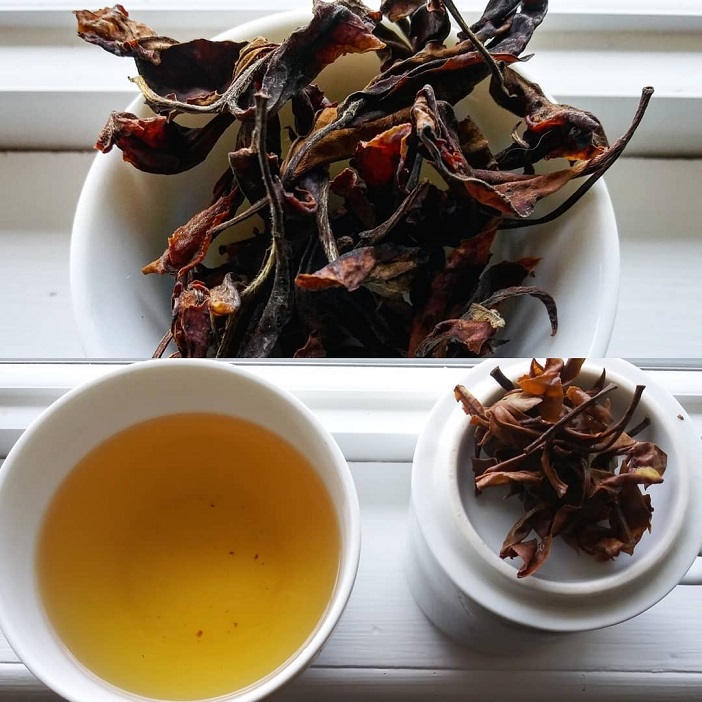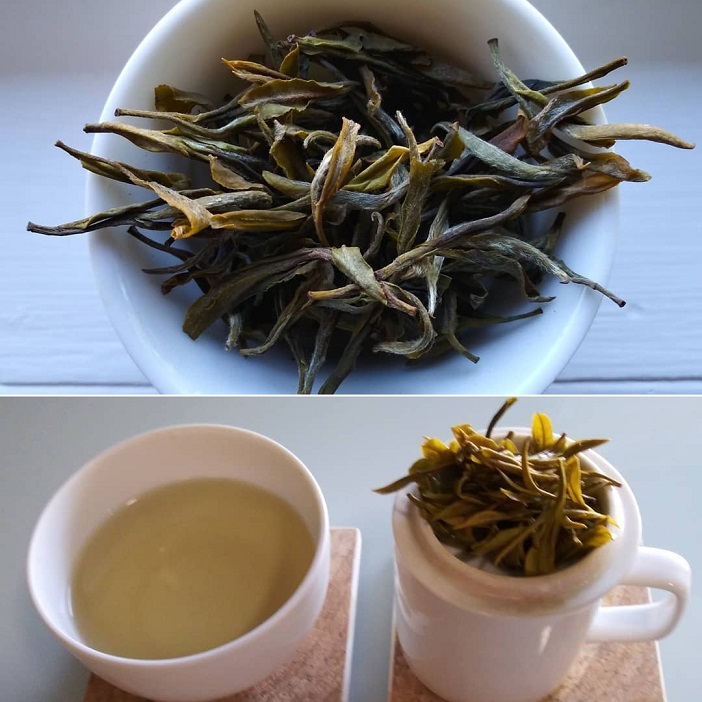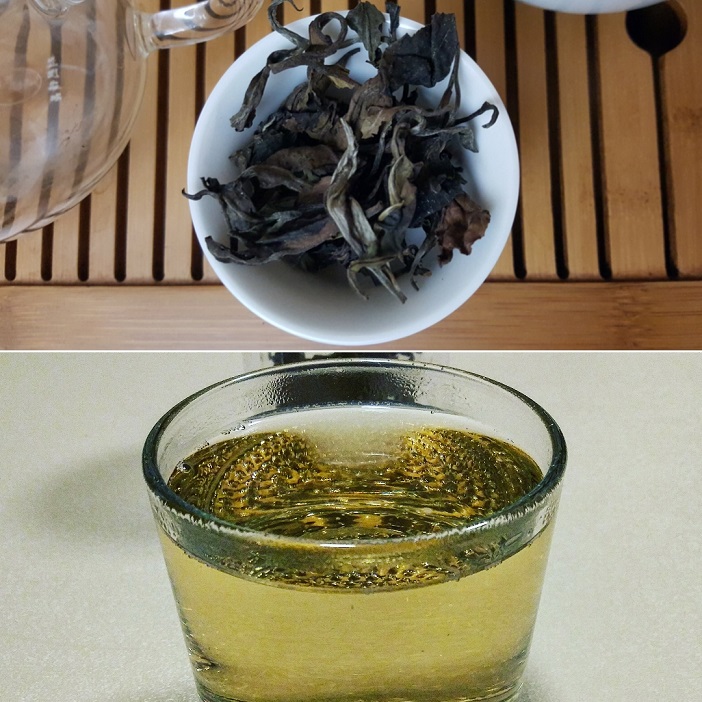Toward the end of any year, content creators, influencers, media pundits (social or otherwise) are encouraged to create look-backs or listicles of the year-that-was. Throughout my long and industrious “career” as a tea blogger, I’ve made such reflections in the past. Usually commenting on how weird the year was, or how wonderful some aspect of it turned out. 2020, though . . . ?

Yeah, I don’t wanna.
It was a terrible, terrible, TERRIBLE year by all objective measures. I won’t even go into detail as to why, I don’t have to, most of you reading this have felt the “Terrible” in your own lives. While I got away from feeling most of the brunt of 2020, my mental state did not. To the point where I took an unintended hiatus from writing anything for close to three months.
The result of that was a rather unwieldy backlog of tea stories I had yet to tell. Some I may not even get to, come to think of it. So, to close the year out (almost a month after it ended), I thought I’d egress—not with a story—but with a theme. For you see, over the course of the year, something(s) weird and wonderful did chance by me. White teas, quite a few weird and wonderful white teas.
Individually, they didn’t have much story to them other than their strange origins or processing, and I didn’t have much to autobiographically add to the tales. Well, other than: “I steeped, I drank, I liked, here’s how” . . . which . . . granted . . . is kinda my average blog outline. Kinda basic, I know.
To make a long intro short(er), I’m going to co-opt the rest of this blogspace talking about the four weird and wonderful white teas that crossed my path in 2020. Here we go:
Khosta GABA White Tea from Moychay

Old time-y readers of this blog might recognize the name: “Khosta”. It’s a tea garden in Sochi, Krasnodar, Russia. I covered them at least three times. Thanks to Russian vendor, Moychay, I was set to cover them again. Khosta, apparently, produced white tea, and had started experimenting with the GABA tea process in 2020.
For the uninformed, here’s the quick-‘n-dirty: GABA teas are processed in such a way that—instead of being oxidized—they are introduced to a nitrogen rich atmosphere. The reason for doing this? To cause a chemical reaction in tea leaves that results in an overproduction of the amino acid, gamma aminobutyric acid; GABA, for short. One of these days, I’ll get to a blog about GABA, but that hasn’t happened, yet. The process was perfected by the Japanese, and widely used by the Taiwanese in the production of certain oolongs and black teas. Never have I ever, though, run into a GABA white tea . . . until 2020.
I’m not even sure how it’s possible, considering white teas are plucked then dried. A little bit of oxidation takes place, but not enough to warrant exception. However, I have run into more heavily oxidized White Peony variants, usually from Taiwan. I’m assuming that’s what happened here, but with the nitrogen technique substituted.
My original intent was to do a side-by-side tasting between the regular White Peony-ish white tea Khosta produces and their GABA version. But the latter was so wildly different, such a comparison was unnecessary. The dry leaf smell was bananas. No, I mean, LITERAL bananas. Taste was similar in sweet potato-ness like other GABAs I’ve tried … only … y’know, white tea-ish.
Loved this weird li’l beauty.
Korean White Tea from Lady Hadong

During the summer, while talking with friends on the Tea Curious Discord channel, Eric “Tea Sleuth” Glass talked about spearheading a group-buy of South Korean teas. In passing, he mentioned how he meant to pick up an experimental white tea heralding from the Hadong region. I just about leapt out of my webcam to get in on that action. He agreed to send me some.
It took a while for it to make it across the Pacific, but when he got it, he reluctantly sent it my way. By reluctantly, I mean, he wasn’t sure I was going to enjoy it. I reassured him that white teas were my jam, and that I wasn’t nearly as picky as he was. Not that—as it turns out—this was ever going to be an issue.
I loved this tea. LoveloveluvlubLOOOOVED this tea. The beautiful, young, light green, small-ish whole leaves produced a light and creamy liquor that translated to a smooth, berry-rich tea drinking experience. It reminded me, in a lot of ways, of a Darjeeling white I coveted to my tongue-bosom; the Arya Pearl.
When I posted about it on Instagram, I heard from the titular producer of the tea—Lady Hadong, herself. She confirmed a few outstanding questions I had, such as the grade of leaf used. As per my suspicions, this white tea was made from Ujeon leaf material, which explained its fruitiness. I hope this is one experiment she continues with.
Tie Guan Yin Bai Cha from Seven Cups

I almost found out about this tea far too late. As a matter of fact, when I contacted Seven Cups about it, the tea had already sold out. But because it was me inquiring about it, Good Guy Andrew went about digging up a vendor sample they had lying around. Lo and behold, he found one and sent it my way.
Shortcut version: their usual Tie Guan Yin producer in Anxi County created a white tea in the “not-oolong” season. The best part? They used the original Hong Xin Tie Guan Yin cultivar to make it. In all my years of tea drinkin’, I’d never heard of a Tie Guan Yin cultivar turned into a white tea. My original plan was to compare it to a Tie Guan Yin oolong, but I forgot to ask for some in my zeal to acquire the white tea.
Tie Guan Yin oolong is known for its buttery, floral notes. Y’know . . . when it’s not a radioactive green ball-rolled blended nightmare. As a white tea made from the O.G. cultivar, it retains much of those same characteristics, only more subdued in some places, but dialed up in others. The florality is more muted, whereas the sweetness and buttery aspects are brought to the fore. A finish of sugarcane and cinnamon was also a nice afterthought. Or aftertaste. Y’know, whichever.
Definitely hoping this is makes the rounds again this coming spring.
2019 Autumn Wild White Tea from Ketlee

Over the last year or so, I’ve tasted a wide range of teas from Manipur, India, thanks to Ketlee. I’ve often sung the praises of their sheng puerh-style tea. And the black tea made from old assamica trees is my go-to utilitarian tea on work days when I’m running on very little sleep. With that order, Ketlee also included a white tea made in the autumn of 2019 . . . and it took me until the autumn of 2020 to finally sip it.
I’m not entirely sure why I waited so long. A part of me thinks it’s because I already tried another white tea made from Manipur old trees. Only that was (I think?) from the spring of 2019. It was a pretty typical, hairy bud-heavy white tea, somewhat reminded me of a Yunnanese Silver Needle, but with that Manipur “golden raisin”y palatial bend. I thought the autumn would be more of the same.
Boy, was that assumption ever wrong.
Unlike the spring, this had more young, open leaves instead of leaf buds. This affected the brew in a number of positive ways. For one: it was bolder, and had a thicker mouthfeel. Secondly, those golden raisin terroir notes I mentioned earlier? Yeah, those were more pronounced. And lastly, it just lasted a lot longer—more infusions for my buck. It also seemed to agree with my body, energetically, more so than the bud-heavy version.
Like it’s older cousin, though, the tea was best imbibed on a full stomach. Wild tea tree material is rough on an empty gut, regardless of processing. However, the qi on this tea was more of an abdominal massage than most.
As I write this, it’s currently the first day of February of 2021. My outlook is more positive, my blogging output . . . eh . . . who knows? The backlog is huge.
I do know one thing, though. As s**ty as 2020 was, I can’t say a lot of weird and wonderful teas didn’t come about amidst the chaos. I suppose that’s worth reflecting on. Even in a look-back listicle.

Leave a Reply